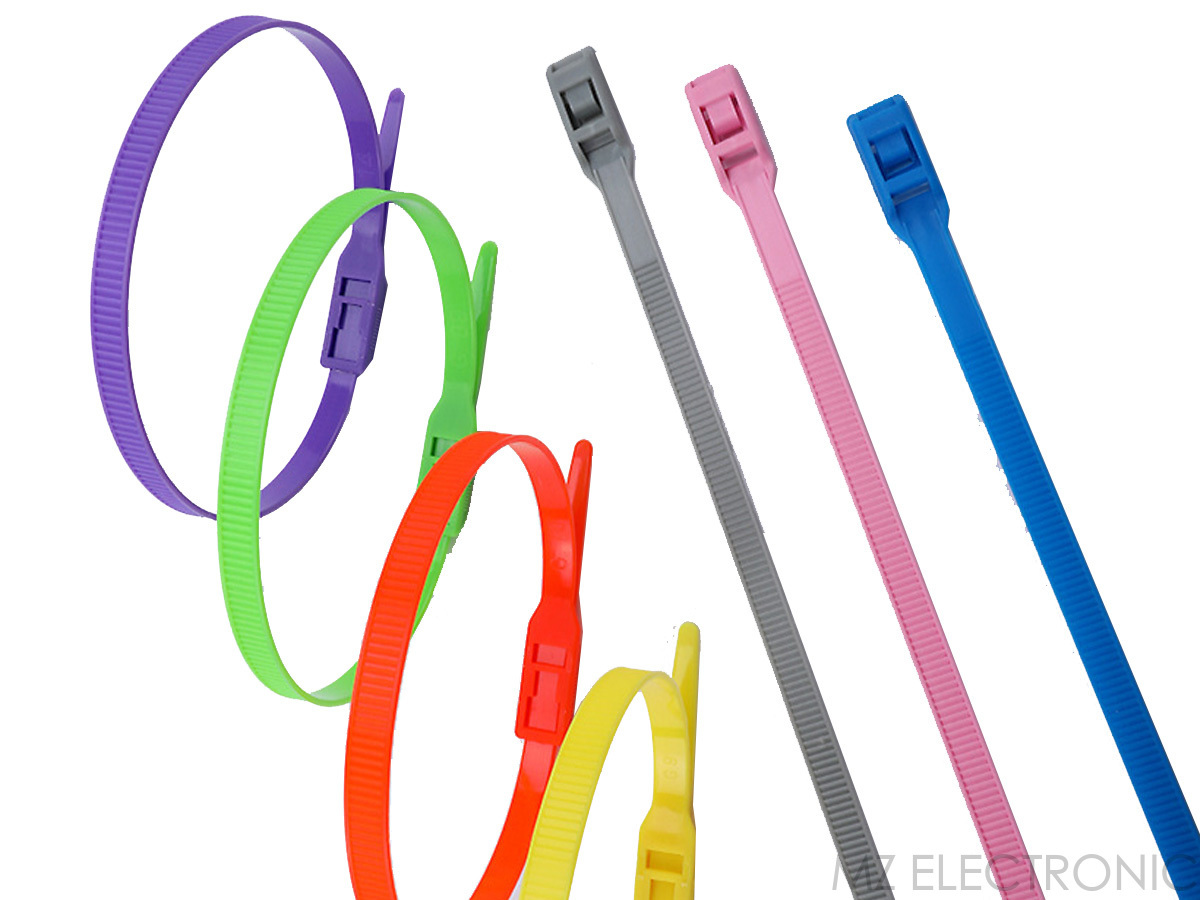29
2025
-
07
Plastic cable ties are used to bind irregular items
Author:
How to Secure Irregularly Shaped Items Using Plastic Cable Ties: Practical Techniques
Bundling irregularly shaped items—such as tools with protruding parts, garden hoses, or sports equipment—requires adaptability. Plastic cable ties are ideal for this task due to their flexibility and adjustable tension. Below are methods to ensure a secure hold without compromising the item’s integrity.
1. Adaptive Wrapping for Bulky or Protruding Components
Items with uneven surfaces, like hand tools or mechanical parts, demand a wrapping technique that accommodates ridges and edges.
- Step 1: Identify High-Risk Areas
Locate parts that could puncture or damage the tie, such as sharp corners or moving joints. Position these areas away from the cable tie’s path. - Step 2: Create a Protective Layer
Wrap soft material (e.g., cloth or foam) around sharp edges to prevent the tie from cutting into the item. - Step 3: Loop and Crossover
Start by looping the tie around the widest section of the item. Cross the tail over itself in a figure-eight pattern to distribute pressure evenly.
This approach works well for securing items like pruning shears or electrical connectors with exposed terminals.
2. Layered Bundling for Flexible or Tubular Objects
Flexible items like hoses, cables, or ropes tend to shift unless bound tightly. Layering cable ties at intervals ensures stability.
- Step 1: Group the Item
Coil or fold the flexible object into a compact shape. For hoses, avoid sharp bends that could kink the material. - Step 2: Apply Primary Tie
Use one tie to secure the center of the coiled item. Leave enough slack to adjust the coil’s tightness without constriction. - Step 3: Add Secondary Ties
Place additional ties every 6–8 inches along the length of the coiled item. Alternate directions (e.g., clockwise and counterclockwise) to prevent unraveling.
This method is effective for organizing garden hoses, extension cords, or bundles of fabric.
3. Multi-Point Anchoring for Complex or Fragile Structures
Delicate or intricate items, such as art installations or holiday decorations, require a gentle yet firm approach to avoid damage.
- Step 1: Map Support Zones
Identify sturdy sections of the item that can withstand tension. Avoid fragile areas like thin branches or decorative elements. - Step 2: Use Padding at Contact Points
Place small pieces of foam or rubber between the cable tie and the item to cushion pressure points. - Step 3: Secure with Loose Loops
Wrap the tie loosely around the item first, then gradually tighten it while monitoring for distortion. Use multiple ties to分散压力 (distribute pressure) across the structure.
This technique is ideal for stabilizing wreaths, string lights, or lightweight sculptures during storage or transport.
Optimizing Grip and Longevity
- Tension Control: Avoid over-tightening, which can deform soft materials or weaken the tie itself. Aim for a snug fit that allows slight movement.
- Directional Alignment: For layered bundling, align ties parallel to the item’s natural curves to minimize slippage.
- Environmental Considerations: In humid or outdoor settings, ensure ties are not trapping moisture against the item, which could accelerate corrosion or mold growth.
By tailoring the bundling method to the item’s shape and material, plastic cable ties provide a reliable, reusable solution for organizing and securing irregular objects in homes, workshops, or outdoor spaces.
plastic cable ties
Hot News
2025-07-29
Plastic cable ties are used to bind irregular items
Bundling irregularly shaped items—such as tools with protruding parts, garden hoses, or sports equipment—requires adaptability. Plastic cable ties are ideal for this task due to their flexibility and adjustable tension. Below are methods to ensure a secure hold without compromising the item’s integrity.
2025-07-29
The method of fixing square objects with plastic cable ties
Securing square objects with plastic cable ties is a versatile solution for organizing tools, bundling materials, or stabilizing structures. This method ensures a tight, adjustable grip without damaging surfaces. Below are techniques tailored to different scenarios, ensuring reliability and ease of use.
2025-07-28
Techniques for binding round objects with plastic cable ties
Bundling round objects like pipes, cables, or hoses with plastic cable ties requires precision to ensure a tight, secure fit without slippage or damage. Below are practical methods to achieve professional results in various applications.
2025-07-28
Precautions for using plastic cable ties in low-temperature environments
Plastic cable ties are widely used for securing cables, organizing bundles, and fastening items in various industries. However, their performance can be significantly affected by low temperatures, leading to brittleness, reduced flexibility, or even failure. Below are critical factors to ensure reliable use in cold conditions.

